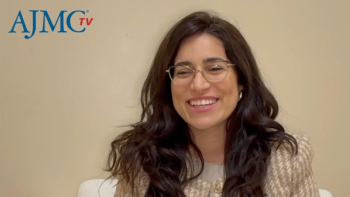
Tiara Green Discusses Leveraging Community Partnerships for Better Health Care Access
Trusted community organizations can effectively communicate and connect underserved populations to necessary health services, Tiara Green, MSEd, Accessia Health says in an interview.
To address cultural or linguistic barriers in health care, it’s crucial to partner with trusted community resources such as faith-based organizations and long-standing community groups, according to Tiara Green, MSEd, president of Accessia Health, a national nonprofit providing comprehensive support to individuals with rare or chronic health conditions.
These entities can effectively communicate and connect underserved populations to necessary health services, Green explained in an interview. On a broader scale, she advocated for health care organizations to begin by fostering an internal culture of
This transcript has been lightly edited for clarity.
Transcript
Many communities face cultural or linguistic barriers. How would you approach building trust and fostering communication with a population historically underserved by the health care system?
It's important to get to their trusted resource. Who is it in their community that they trust, whether it's a faith-based community, maybe it is someone that has been in the community for a long time, those community-based organizations, it's partnering with those entities to ensure that is the collaborative method in reaching individuals. And I'll give you an example. There is a project that we're a part of with the coalition to transform advanced care. And that initiative really focuses on utilizing faith-based leaders who are trusted sources within the community to say, "Hey, these are the services that you should have. Maybe it's these clinical screenings that are necessary. Let's get you connected to the right resources." But finding that trusted resource has been the key to bringing people in.
In your perspective, how can health care organizations address health disparities and promote health equity on a broader scale?
You're starting internally, right? If we have a message internally within our health care organizations, then it kind of filters out. Making sure that physicians have the proper training. Is it culturally appropriate training? Making sure that they have some type of unconscious bias training, but making sure that those that are serving the underserved community, understand what it's like to live in those shoes, to walk in those shoes. Making sure they're prepared to have those conversations with patients who don't necessarily trust the health care system like we just talked about. So, starting internally, with training, making sure that they receive ongoing training. This isn't a one-time thing because, you know, health equity just sparked with COVID. It's ongoing and making sure that everyone understands those needs, but also making sure that they're talking on a level to underserved populations that is not frightening, but also not condescending, but uplifts them and helps them understand what their treatment options are.
Newsletter
Stay ahead of policy, cost, and value—subscribe to AJMC for expert insights at the intersection of clinical care and health economics.









































